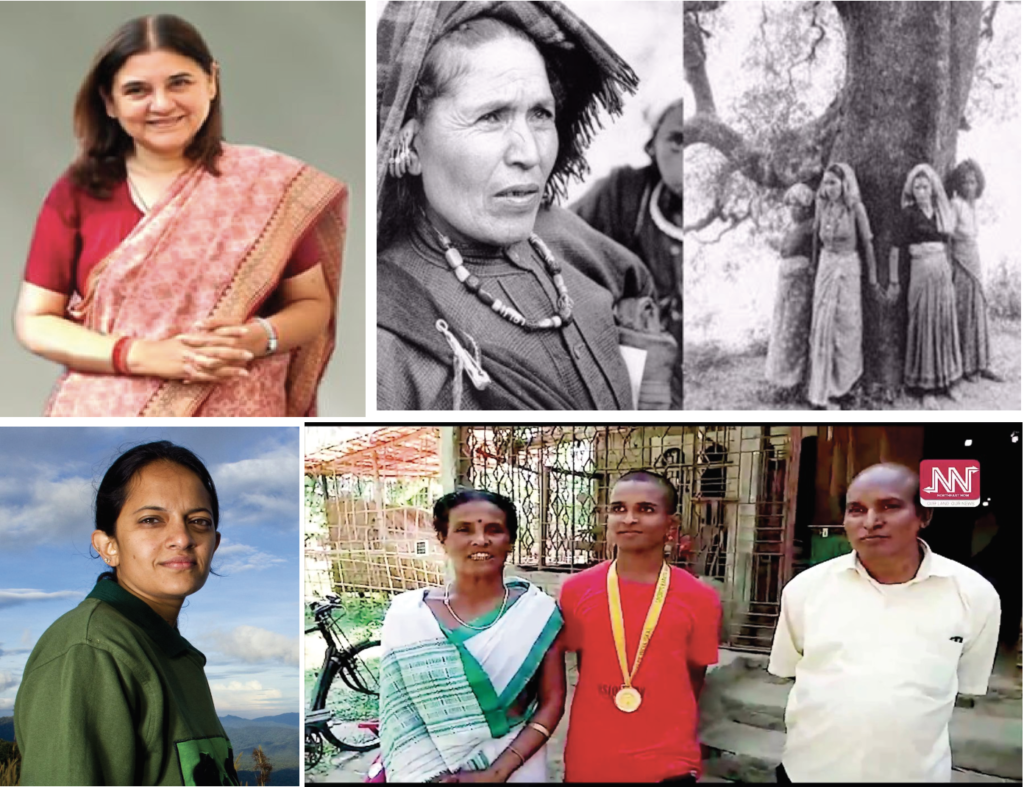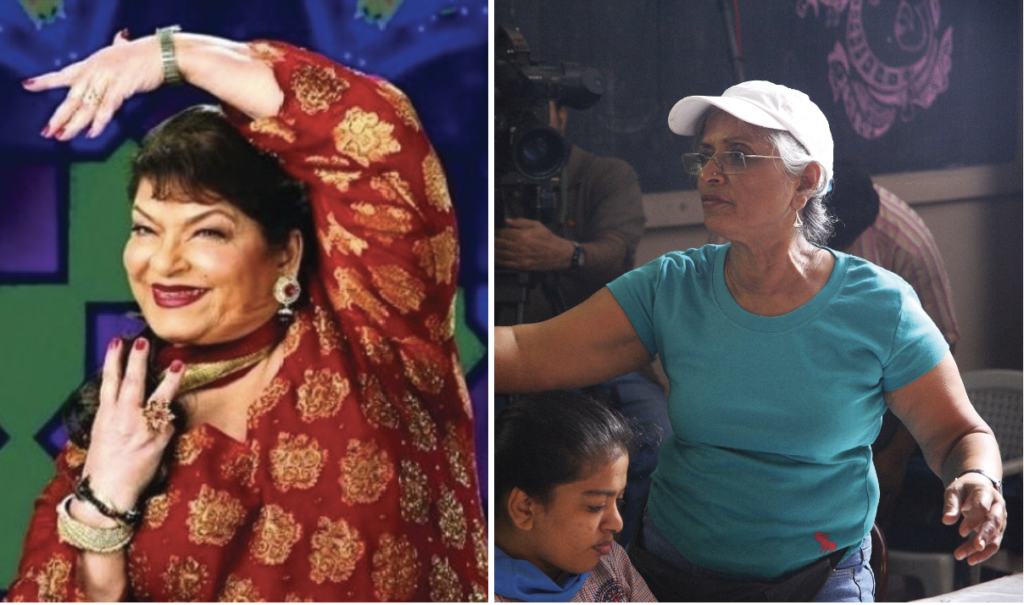Entertainment industry is becoming a centre-stage for women protagonists. The stereotypical image of a woman as the victim and sufferer is now overshadowed by a brigade which has established that the Indian Cinema today can boast of the Best of Best in all aspects of film-making – be it acting, direction, choreography and techniques. Kriti Kalra sketches the rise and rise of women in cinema industry.
The Indian entertainment industry comprising films, television, online media and now OTT have come a long way. The film industry has traditionally been dominated by males but in the last few years there has been a gradual rise in and acceptance of content that is women centric. More content with strong women protagonists are now surfacing and the debate about the stereotypical portrayal of women is passé, so to speak.
Women in the film industry have also diversified from being in front of the camera to contributing from behind the camera. Today, Indian women are garnering respect as actors, directors, art directors, cinematographers, music composers, etc. within the country and beyond borders too.
Cinema finally coming of age
The Indian film industry is the largest in the world. Since Independence, the film industry comprising Hindi and regional films has undergone significant changes. Dadasaheb Phalke’s Raja Harishchandra (1913) was made at a time when films were not considered a respectable profession for women. So, a male actor had played the role of the king’s wife, Taramati.
In his second film Mohini Bhasmasur (1913), Phalke used Durgabai Kamat who became the country’s first female actor and her daughter Kamlabai Gokhale became India’s first female child actress by acting in the same movie.
Known as Hindi cinema’s first-ever comedienne, Tun Tun had run away from her home in Uttar Pradesh to become a playback singer. She made her debut as a solo playback singer in Nazir’s Wamiq Azra (1946). She made her acting debut in 1950 with the film Babul.
The first ladies of the film industry Devika Rani, Naseem Banu, Zubeida, Shanta Apte, Mehtab, Shobhana Samarth, etc. paved way for Meena Kumari, Nutan, Nargis, Madhubala who with their acting prowess and powerful roles set things in motion for the next generation of female artists.
Today, actresses are at par with their male counterparts in terms of fan base, popularity, roles and financial status. The discrimination exists but several female actors and filmmakers have broken the glass ceiling. Moreover, many women, over the years, have gone behind the camera even as technicians in the industry.
Women film technicians help shape cinema
Dadasaheb Phalke’s wife Saraswatibai Phalke was India’s first female editor as she educated herself with technology and worked hard on her husband’s films.
Asia’s first women cinematographer B R Vijayalakshmi worked as an interior designer before taking to cinema. Keen on pursuing cinematography from a film school, she decided otherwise upon persuasion from cinematographer Ashok Kumar and made her feature film debut in 1985 with the Tamil film Chinna Veedu as a camera assistant. Vijayalakshmi made her directorial debut in 1995 with Paattu Padava where she also handled the script as well as the cinematography for the film. The movie was screened at the International Film Festival of India (IFFI) in 1996 and earned critical acclaim.
India’s first woman sound engineer Meena Narayanan was in school when her husband, A Narayanan, recruited her to be famous sound engineer Poddar’s assistant in the 1930s from whom she learnt every aspect of sound engineering.
Trained theatre artist Fatma Begum was India’s first female director when she decided to direct the film she also wrote the script of – Bulbul-e-Paristan (1926).
Women add ‘art’ to films
Daughter of courtesan Daleepabai and trained in classical music, Jaddan Bai became India’s first female music director when she composed the music for Talashe Haq (1935) and Madam Fashion (1936).She’s also the mother of famous Indian actress Nargis.
Starting her career as a background dancer, talented Saroj Khan soon rose to success and became Bollywood’s first female chief choreographer. She made her mark as an independent choreographer with the 1974 film Geeta Mera Naam and played a crucial role in shaping the careers of popular actresses Madhuri Dixit and Sri Devi. Saroj gave the country some of the most memorable and popular numbers including Dhak Dhak Karne Laga (1992), Hawa Hawai (1987), Kaate Nahin Kat Te (1987), Ek, do, teen (1988), Choli Ke Peeche Kya Hai (1993), etc.

Art direction is an important aspect of filmmaking but most people outside the industry are not aware of it. Art Director Dundhu Renjeev, the first female art director of Kerala went against the wishes of her family to choose a career most don’t even know about. Dundhu undertook an animation course in Thiruvananthapuram before joining a programme Invisual communications.
She eventually made her debut as an independent art director with The ‘Other’ Love Story in 2016. She says, “There are no budgetary constraints in big films, unlike in small-budget film where you have to make do with what you have and come up with ideas instantly.” She maintains it’s more challenging to work in small-budget films.
“Many women don’t want to experiment or are afraid of treading an unbeaten path. That has to change. It may also be due to a lack of exposure. There are plenty of courses in acting and direction but how many do we hear about art direction?” she offers. Despite it being a physically-demanding field, women art directors are carving a niche for themselves in a traditionally male-dominated field.
Women breaking all barriers
Writer, Director, Editor and Producer and National Award Winner Arunaraje Patil is the first woman technician to be trained at the Film and Television Institute of India (FTII). She passed out of FTII with a gold medal in 1969 and went on to work in films like Masoom and Giddh. She is known to make thought-provoking feminist movies too.
She says, “It’s been a long journey . . . 52 years for me and 60 years for FTII.” Today, she’s conducts workshops for cinema enthusiasts to teach the next generation of filmmakers. “It’s not so much the content but the quality of teaching that makes the biggest difference!”
One of the most successful and the biggest names in the television industry, Joint Managing Director and Creative Director of Balaji Telefilms Ekta Kapoor revolutionised the television industry by introducing a new genre of soap operas portraying powerful women.
Speaking at a session on ‘Women leaders impacting entertainment and cinema’ at Film Bazaar organised by NFDC (National Film Development Corporation) Film Bazaar held annually in Goa parallel to the International Film Festival of India, she said, “When I started in television, first accidentally, and later deliberately, we started taking female-driven narratives.
Then TV became an anti-thesis of films on a much larger medium, where women were empowered, their fashion sense became a talking point. Men were there, but they had to look good. It was no longer their narrative. The protagonist was a woman.”
The discussion tackled how women have made inroads in the industry and broken the glass ceiling and the opportunities that exist for women today in the industry.
Ekta Kapoor further added, “If you create content with women wearing saris, people call you regressive, if they wear swimsuits, they call it sexual. And I call them judgmental. I was telling someone the other day that I am probably the only person who has been criticised for being overtly progressive and at the same time, (for being) regressive and conservative.”
Women across the traditional and new media – films, television, OTT – have transcended boundaries set by the society and are making a mark for themselves.

